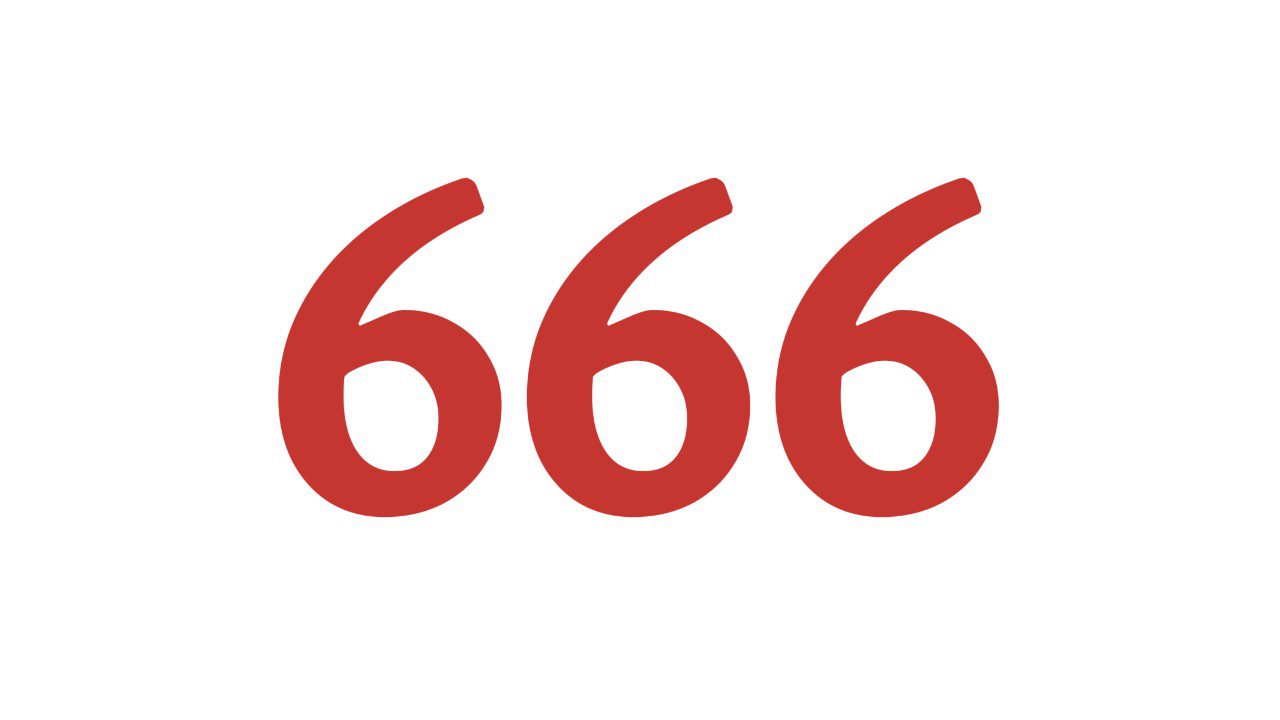The Mark of the Beast

“He causes all, both small and great, rich and poor, free and slave, to receive a mark on their right hand or on their foreheads, and that no one may buy or sell except one who has the mark or the name of the beast, or the number of his name. Here is wisdom. Let him who has understanding calculate the number of the beast, for it is the number of a man: His number is 666″ (Rev. 13:16–18).
Many Christians believe this is a prophecy about a time period when people throughout the world will be forced by a wicked one-world government/religious authority to choose between taking the “mark of the beast” (tattoo/microchip) or not being allowed to buy or sell. All commerce will be done electronically, and anyone without the “mark of the beast” will not be able to buy or sell food, clothing, gas, houses, cars, or anything else. Eventually, those without the “mark of the beast” will be persecuted and killed.
Is this really what this passage is referring to?
First, even if it is, it must have happened shortly after Revelation was written. After all, the angel of Revelation said this prophecy would happen soon, for the time was at hand (Rev. 22:10). Therefore, it must have happened in the first century.
Second, in order to understand what the “mark of the beast” refers to, we should first consider what Revelation says about the “mark of God,” which is the opposite mark:
“Then I looked, and behold, a Lamb [Jesus] standing on Mount Zion, and with Him one hundred and forty-four thousand, having His Father’s name written on their foreheads [the mark of God]…These are the ones who were not defiled with women, for they are virgins. These are the ones who follow the Lamb wherever He goes. These were redeemed from among men, being firstfruits to God and to the Lamb. And in their mouth was found no deceit, for they are without fault before the throne of God” (Rev. 14:1–5, italics mine).
Notice that the 144,000 have the Father’s name (mark) on their foreheads and “follow the Lamb where he goes” (Rev. 14:1, above). These are Christians. In another passage in Revelation about the 144,000, John says they are “from the tribe of Israel” (Rev. 7:4). Therefore, “the 144,000 with the mark of God” refers to Jewish followers of Christ–that is, Jewish converts to Christianity. Furthermore, Revelation 14:4 calls the 144,000 “firstfruits,” which means they were the first generation of Jewish converts to Christianity. The apostle James was a firstfruit (James 1:18); the apostle Paul was a firstfruit (Rom. 8:23); and the household of Achaia were firstfruits (1 Cor. 16:15). The firstfruits were the first generation of Jewish converts to Christianity, such as the apostles. Therefore, “the 144,000 with the mark of God” were the first generation of Jewish converts to Christianity. This is the time period Revelation is describing!
Notice, also, how Revelation 14:5 says the 144,000 are “without deceit.” This is exactly how Jesus described his Jewish disciple Nathanael: “Behold, an Israelite indeed, in whom is no deceit!” (John 1:47). This again shows that the “144,000 with the mark of God” were the first generation of Jewish converts to Christianity. In other words, they were Christians in the first century!
Notice, also, how Revelation 14:4 says the 144,000 “were not defiled with women, for they are virgins.” This is referring to the righteous remnant of Israel in the first century who stayed faithful to God/Jesus–as opposed to the majority of Israel, who went after other gods (see John 19:15). Jesus called his Jewish contemporaries “an adulterous generation” because they whored after other gods (Matt. 12:39, 16:4)! On the other hand, the “144,000 with the mark of God” were the faithful remnant of Israel, such as the apostles, who stayed true to God.
Notice, also, how Revelation 14:1 also says “the Father’s name is written on their [the 144,000’s] foreheads.” Was this meant literally? No! We can be sure of this because no other New Testament book mentions such a “name” (mark) on people’s foreheads. If God was literally putting marks on the foreheads of Jewish converts to Christianity in the first century, then Jesus’s apostles would have had one too; after all, they were part of the 144,000 (see above). And if this were the case, surely at least one of the other New Testament books besides Revelation would have mentioned this supernatural phenomenon, at least in passing. In fact, the scribes and Pharisees likely would have called it demonic, just as when they accused Jesus of casting out evil spirits by the power of Beelzebub (Matt. 12:23). Since the “mark of God” is not mentioned anywhere in the New Testament other than in Revelation, we can safely conclude it is symbolic, not literal. This should not be all that surprising, considering how symbolic the rest of Revelation is.
Since the “mark of God” is symbolic, then the “mark of the beast” must be symbolic too. These are opposite marks. One refers to those in the first century who followed Christ, and the other refers to those in the first century who aligned themselves with God’s enemies (the Jewish establishment and the Roman Empire).
Another reason we can be sure “the mark of God” was not meant literally is because of how it is used in the context of Revelation 3: “He who overcomes, I [Jesus] will make him a pillar in the temple of My God…[and] I will write on him the name of My God and the name of the city of My God, the New Jerusalem, which comes down out of heaven from My God. And I will write on him My new name” (Rev. 3:12).
Is Jesus literally going to turn people into pillars of a temple, as this verse says? Of course not. Jesus meant this metaphorically/spiritually, just like when Peter said Christians are “living stones” of the temple (1 Pet. 2:4–8). So if the part about turning people into pillars of the temple is not meant literally, then neither was the other part about Jesus writing his Father’s name (and his name, and the name New Jerusalem) on people’s foreheads. Besides, that’s an awful lot of stuff to literally be writing on people’s foreheads!
Since the “mark of the God” is not literal, then the “mark of the beast” is not literal either.
Third, Revelation is not the only book in the Bible that mentions such a “mark”; Ezekiel does too. In Ezekiel’s prophecy (vision) about the judgment of Israel back in 586 BC, God had told an angel to “put a mark on the foreheads of the [faithful] men who sigh and cry over all the abominations that are done within [Israel]” (Ez. 9:4, italics mine). God then told the angel to kill anyone without a mark (Ez. 9:5).
Was this a physical mark that could be seen with physical eyes? Of course not. This was a vision (Ez. 8:4). However, the judgment aspect was certainly seen. In fact, the judgment happened just a few years later, in 586 BC, when God used the Babylonians to destroy Jerusalem and the first temple (Solomon’s Temple). Many Jews were killed.
The reason why Revelation used this same imagery (“the mark”) was that a similar kind of judgment was about to happen to Israel again. Israel had once again become full of abominations, just like in Ezekiel’s day, and God was once again going to judge them, just like in 586 BC. And he did, just a few years later, in AD 70!
Fourth, notice that Revelation says people would receive these “marks” on their hands or foreheads (Rev. 13:16). Many commentators have pointed out that the “mark on the forehead” symbolizes one’s thoughts, and the “mark on the hand” symbolizes one’s actions. A person’s thoughts and actions reveal who he belongs to. Having the “mark of the beast” in the first century meant you stood with God’s enemies (the Jewish establishment and/or the Roman Empire). Conversely, having the “mark of God” meant you stood with God and his Christ.
Buying and Selling
“He causes all, both small and great, rich and poor, free and slave, to receive a mark on their right hand or on their foreheads, and that no one may buy or sell except one who has the mark or the name of the beast, or the number of his name” (Rev. 13:16–17).
What about the term “buying and selling”? What does this refer to?
Some commentators say “buying and selling” was specifically linked to the temple in Jesus’s day, which was destroyed in AD 70. This was the temple in which Jesus overturned the money changers’ tables, who were buying and selling. Jesus called this temple a den of thieves (Matt. 21:12). Elsewhere, Jesus referred to the Jewish leaders who controlled the access to this temple as hypocrites (Matt. 23:13), full of extortion (v. 25), and a brood of vipers (v. 33). Christians were sometimes kicked out of the temple, and thus were not allowed to buy and sell. In fact, Acts records an incident in which Paul was dragged out of the temple, and the doors slammed behind him (Acts 21:26–30).
Other commentators argue the term “buying and selling” refers simply to one’s allegiance, similar to one’s “mark.” It has to do with buying (choosing) Christ, as opposed to buying (choosing) worldly pleasures. In Revelation 3:18, Jesus counseled Christians to “buy from Me gold refined in the fire, that you may be rich; and white garments, that you may be clothed, that the shame of your nakedness may not be revealed; and anoint your eyes with eye salve, that you may see.”
There is a similar passage in the Old Testament where God says: “Come, all you who are thirsty, come to the waters; and you who have no money, come, buy and eat! Come, buy wine and milk without money and without cost. Why spend money on what is not bread, and your labor on what does not satisfy?” (Isa. 55:1–2, italics mine).
“Buying” has to do with choosing the things of God over the things of the world:
“Do not lay up for yourselves treasures on earth, where moth and rust destroy and where thieves break in and steal; but lay up for yourselves treasures in heaven, where neither moth nor rust destroys and where thieves do not break in and steal. For where your treasure is, there your heart will be also” (Matt. 6:19–20).
However one interprets “buying and selling,” the event in Revelation must have happened soon after the book was written. After all, John said the events would happen soon, for the time was at hand (Rev. 1:1–3, 22:6–10). There’s just no (honest) way around the time indicators.
By Alex Polyak, Director of The Bible Fulfilled May 4, 2024
For more about the beast of Revelation–and the book of Revelation in general–get my book The End Is Here: How the New Testament’s Prophecies Were Fulfilled. I discuss such topics as the dating of Revelation, 666, the land beast, the sea beast, the harlot, Babylon, the seven kings, and much more!
